Mystical Rapa Nui
A page from my Travel Journal
I don’t think I’ve ever been to a place as isolated as Easter Island (map), or Rapa Nui as it’s called by the locals. It was quite amusing seeing our flight path from Tahiti – it was literally from one dot to another and the rest of the screen was filled with the deep blue of the Pacific Ocean. Easter Island is one of the most isolated islands in the world; the closest landmass is about 4,000 km way!
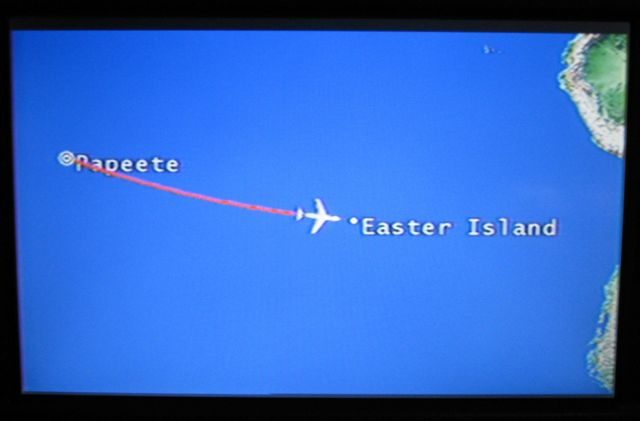
Easter Island really is a small island (at 120 square kilometers, it’s about a quarter the size of Singapore) but the scenery is spectacular and it boasts an extraordinary history, with one of the greatest mysteries of our time. My first impression of the island was that it looked rather much like the Irish countryside/coast: windswept green rolling hills that abruptly end at the coast with massive white cliffs, some 300 meters in height, with the great ocean tirelessly pounding at their feet. And then I started to notice the cones of extinct volcanoes that litter the countryside, and on closer inspection, the green shrubs were guava trees and the forests were eucalyptus, and I thought, no, this is pretty unique. Another first impression: the fresh air! It really is incredibly fresh…I guess it would be if you’re thousands of miles away from everything. Probably because of the fresh ocean air, I’ve been sleeping here for at least ten hours every night!
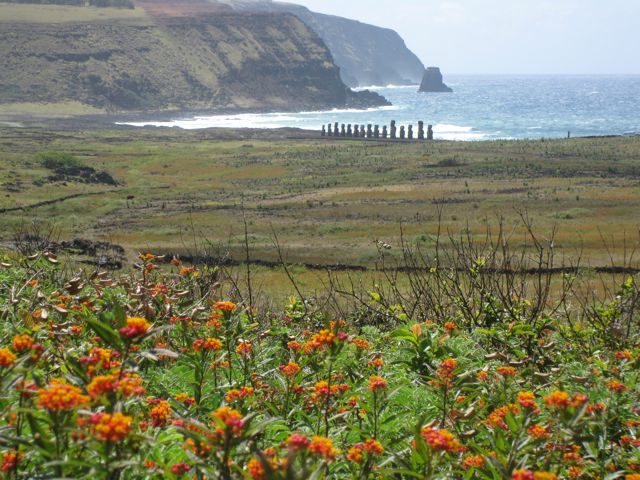

On our first day, we went for a half-day tour. Our first stop was the breathtaking site of Ahu Akivi. ‘Ahu’ are the great platforms on which the ‘Moai’ (statues) were erected. It still is very much a mystery why these statues were built and how the locals managed to erect such huge statues (the largest are more than 20 meters long) and haul them many miles from the quarry to the ahu. Various theories were introduced during the next few days but I like the one that says that aliens created them during their stay on Earth 😉
There’s a spot where the evolution of the moai can be seen clearly (what the earlier moai looked like compared to the later versions) and the earlier moai actually looked more alien than human! But I guess that’s just my wild imagination… The widely accepted theory is that these statues were built as a shrine to the ancestors who the locals believed protected them. Something generic like that.
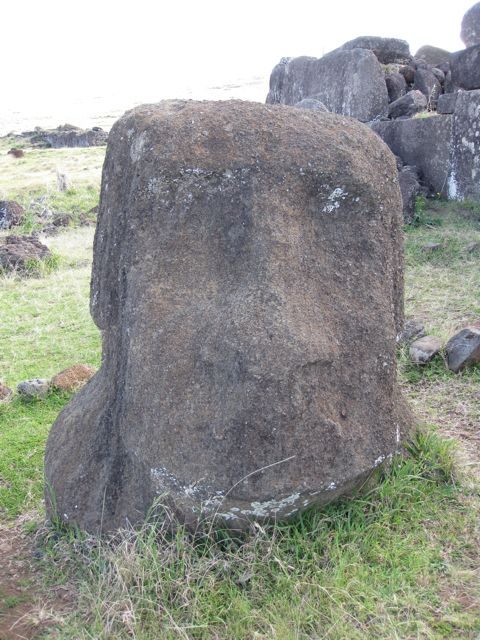
Anyway, Ahu Akivi consisted of a large ahu and seven large moai, all of them facing the sea – this is a unique feature as all other moai on the island face inland. We were then taken to former cave dwellings which were created by ancient lava flows. The locals would use these caves as a refuge when they were under attack and as a shelter from the summer heat and cold winds. The caves all had a water source, gardens with vegetable and fruit trees, and sleeping and living areas. I thought the caves were great, with their cool interiors and bright ‘courtyards’ (formed by the collapse of the cave roof) where vegetables and fruits were grown.
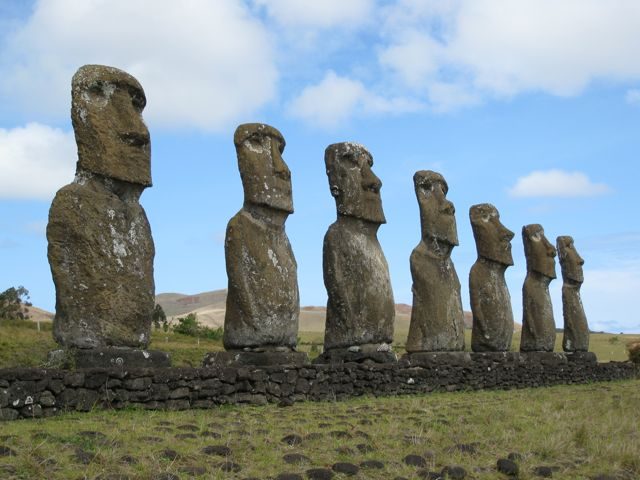
After the tour, we went for a short walk around the little town of Hanga Roa, the only place on the island where people are allowed to live (the rest of the island is a national park). Only 5,000 people live here and they mostly depend on tourism for their income so the town is filled with little restaurants, cafés and souvenir shops that cater to tourists. There’s also one bank, one post office (from which we got some very cool stamps in our passports for USD 1), an interesting museum and a hospital. The town’s harbour was filled with many fishing boats.
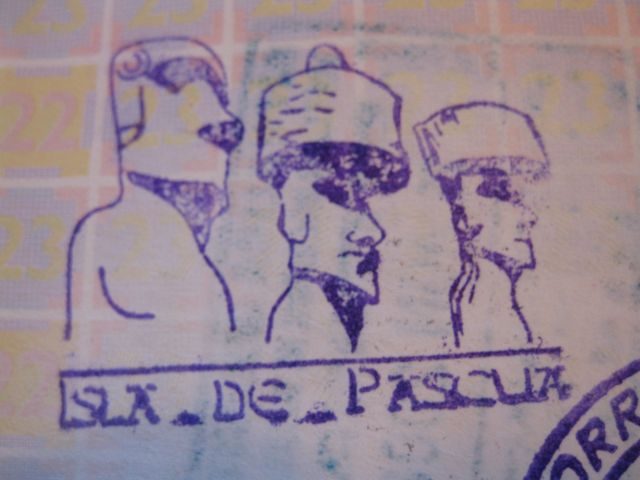
When we walked by, we spotted several large green turtles which, we later found out, live in the harbour. That evening, we had dinner at a quaint restaurant at the harbour called Taverne du Pescheur.
The following day, we were picked up at 9:30am for our full-day tour. We were first taken to a spectacular spot called Vinapu. The coastline here is very rugged with high cliffs and rocky plateaus, and the waves here are monstrous and relentless. At the edge of one of the cliffs was a rocky platform with what initially seemed like a row of large slabs of rock with several boulders. As we neared the platform, it turned out that this was indeed an ahu with toppled moai. There were many wars among the various clans on the island and many of the moai were destroyed or toppled. In 1960, a massive tsunami hit the island and toppled the rest of them – presently, archeologists have re-erected 36 of the more than 800 moai on the island.
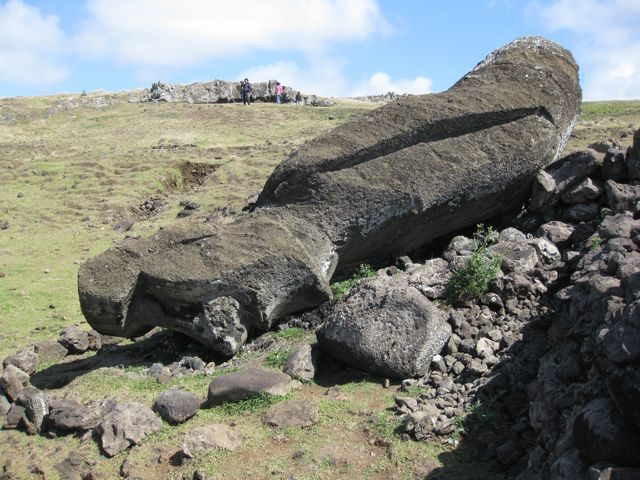
We then continued up the spectacular eastern coast to Rano Raraku, an extinct volcano and the site of the quarry or the ‘factory’ where the moai were made. As we approached the volcano, we saw dozens of heads just sticking out of the grassy hillsides, an astounding sight. A path led us up and around the volcano and along the way, we could see dozens of moai in various stages of production. There was a huge unfinished moai measuring 22m – its head and body were carved but it was still attached to the rock. Other completed moai stood tall, with their proud heads sticking out of the grass. Really amazing.
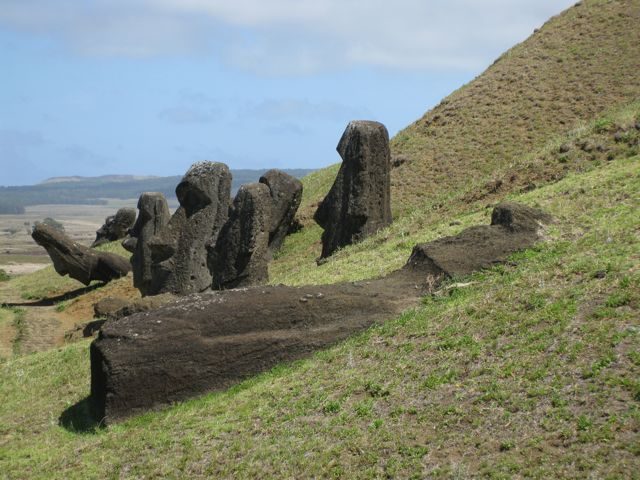
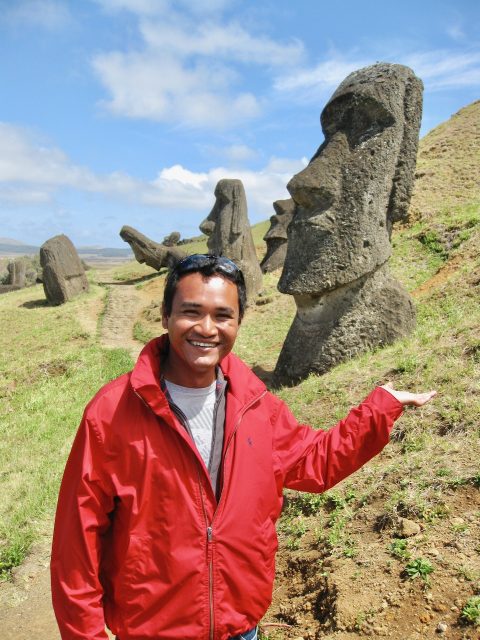
We climbed into the volcano’s crater and there was a reed-fringed lake and along the embankments were more moai. After a BBQ lunch at the site, we headed to probably the most stunning ahu, the Ahu Tongariki. This is by far the largest ahu (fifteen moai in a row) with the ocean and cliffs forming a dazzling backdrop. Breathtaking stuff indeed.
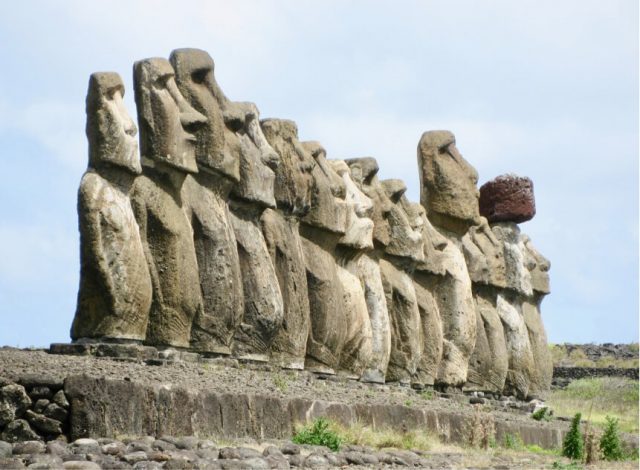
We then crossed the island, passing by guava plantations and grazing fields with cows and horses, to the northern shore where we visited an ancient ceremonial site with a round magnetic stone which locals called the ‘navel of the Earth’ (when you put your hands on it, you can actually feel little electric shocks – very cool).
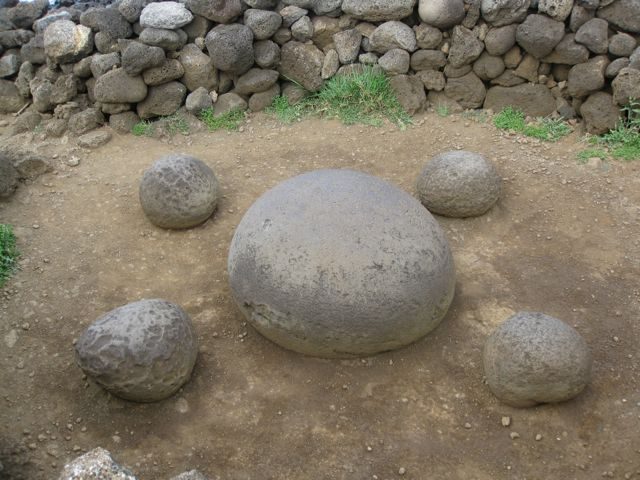
We then continued to the Ahu Nau Nau and Anakena beach. Anakena beach is quite extraordinary as it’s the only sheltered bay on the island, and it boasts a broad arc of golden sand. I think the locals wanted to give the beach a more exotic feel so they planted straight rows of coconut trees along one side of the beach. I guess it would’ve looked more authentic if the coconut trees were planted randomly around the beach!
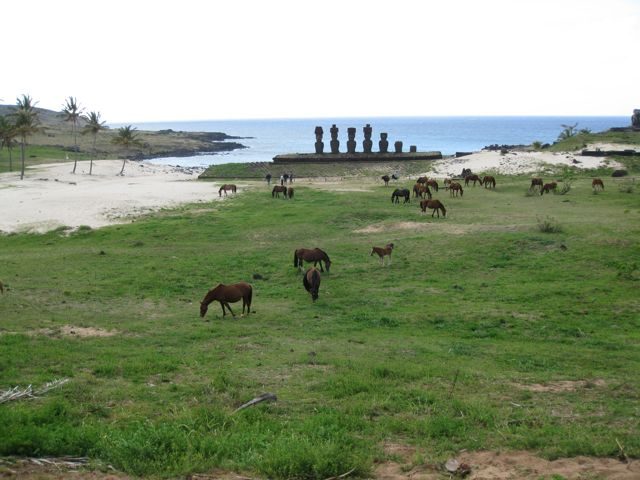
On our last day, we were taken on a half day tour to Orongo, another ancient ceremonial site on the edges of a volcano. We passed the airport along the way. The airport’s runway, at 4 km, is the longest in Chile and in the South Pacific – the Americans extended the existing runway in the 1970’s as an emergency landing site for the space shuttle but it has never been used for that purpose.
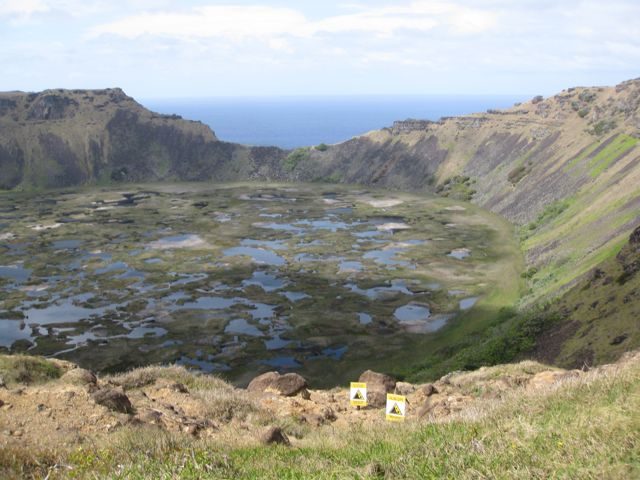
When we arrived at the foot of the crater, we hiked up the last stretch, with the howling winds playing puppets-on-a-string with us, to the top of the volcano where a magnificent view of the large crater awaited us. We continued along the path and visited primitive houses where the priests used to live and we were shown large boulders full of rock carvings (petroglyphs). The views of the crater on one side and the deep blue ocean on the other were just stupendous.
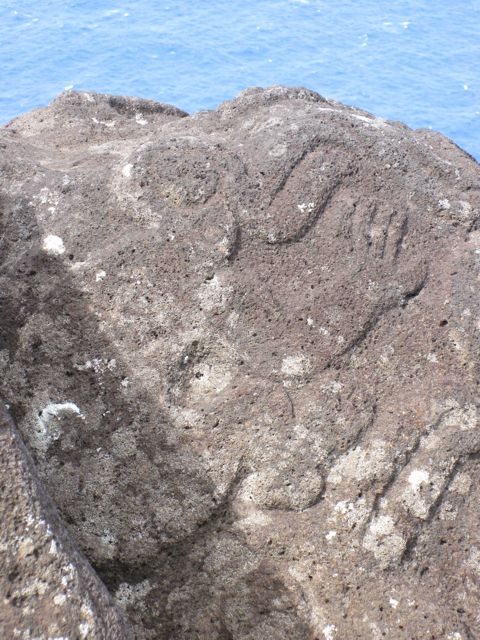
We flew on to mainland Chile the next day. Easter Island was absolutely fascinating, intriguing and mysterious, definitely one of the must-visit places in Chile! I’m glad I had the opportunity to visit the island – it certainly was another dream come true for me!
Other Travel Journal entries include:

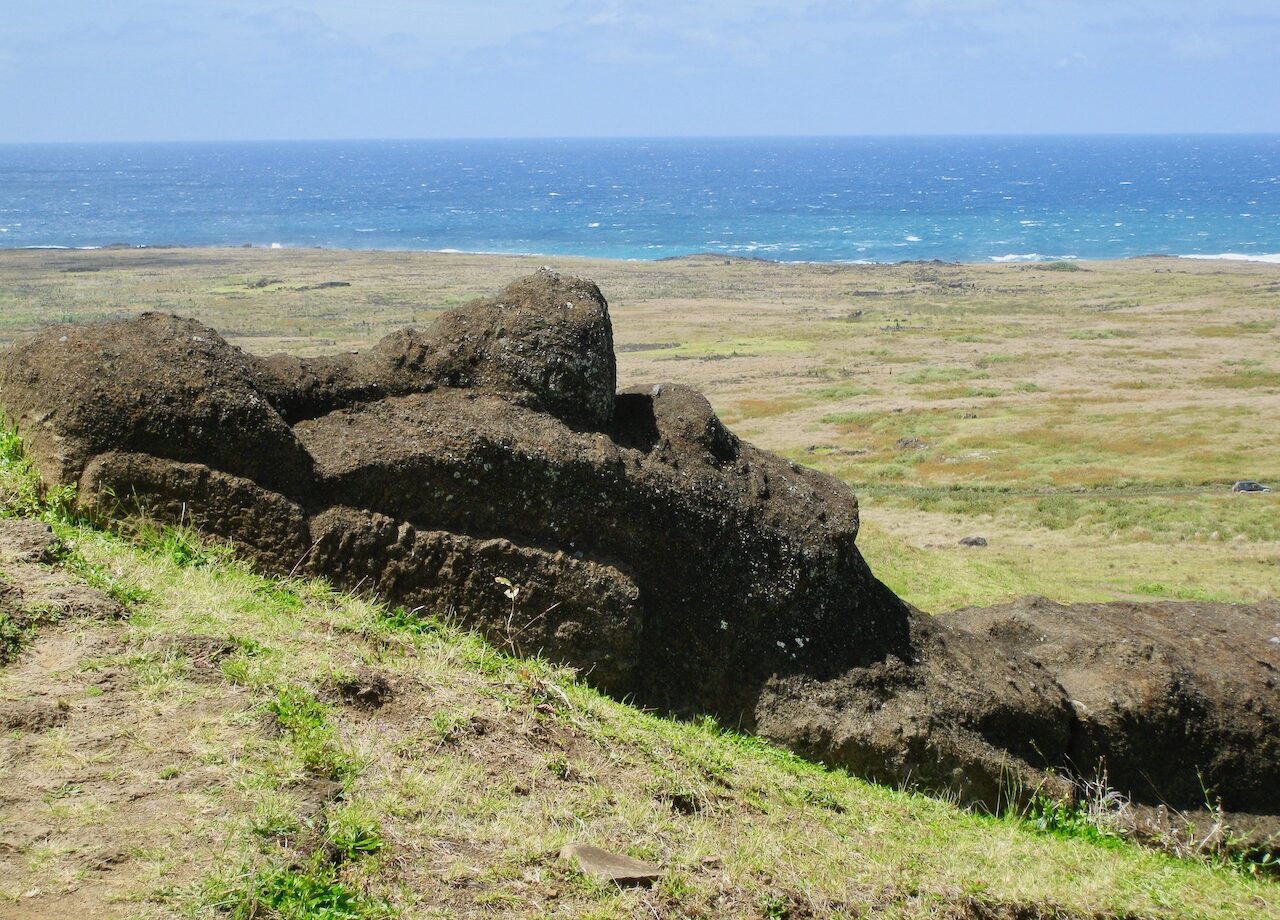
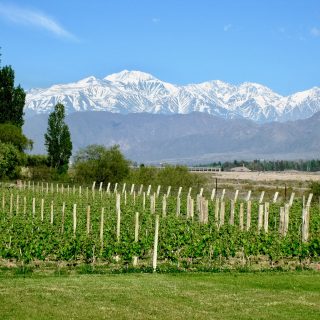
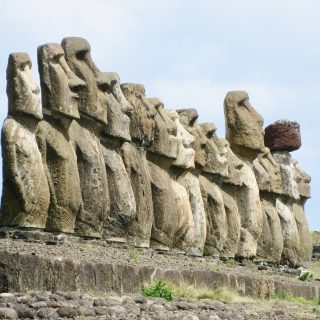
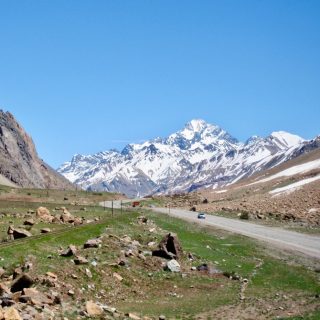
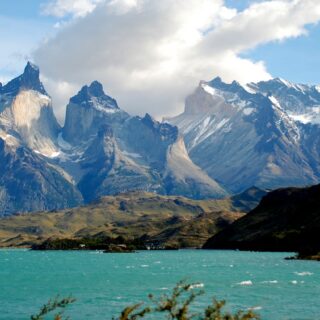






[…] Mystical Rapa Nui […]
[…] Mystical Rapa Nui (Easter Island, Chile) […]
Beyond amazing!!!!!!!
[…] Mystical Rapa Nui (Easter Island, Chile) […]
[…] the accompanying post: ‘Mystical Rapa Nui‘. Friday, June 11th, 2010 South America TAGS: Chile, Easter […]
[…] Mystical Rapa Nui […]
Nice pics and post. Rapa Nui island is located in west of Chile in the South Pacific Ocean.Rapa Nui Unique stone figures are known as Moai,archaeological ruins here is Ahu. Another archaeological ruins are Rano Raraku. A natural area cum an archaeological site here is the Orito. You can see village of Hanga Roa, Iglesia Hanga Roa, Catholic Church, Museum, Rapa Nui National Park. There are amazing beaches you can see. Enjoy Hike or horse ride through the archaeological sites. For more details refer http://www.theearthtraveler.com/rapa-nui-easter-island-tourism.html
[…] Mystical Rapa Nui (Easter Island, Chile) […]
[…] Mystical Rapa Nui (Easter Island, Chile) […]
[…] Mystical Rapa Nui (Easter Island, Chile) […]
[…] Mystical Rapa Nui (Easter Island, Chile) […]
[…] Mystical Rapa Nui (Easter Island, Chile) […]
gorgeous photos – i really hope i get to visit easter island – great site!
Thank you Trudy for your comment!
Best regards,
Keith
Visiting this place is on my bucket list. 😉 I never even thought about how fresh the air would be there. Thanks for sharing such a great blog.